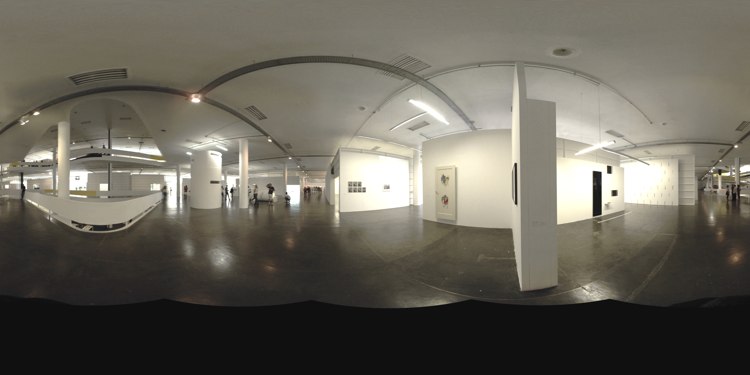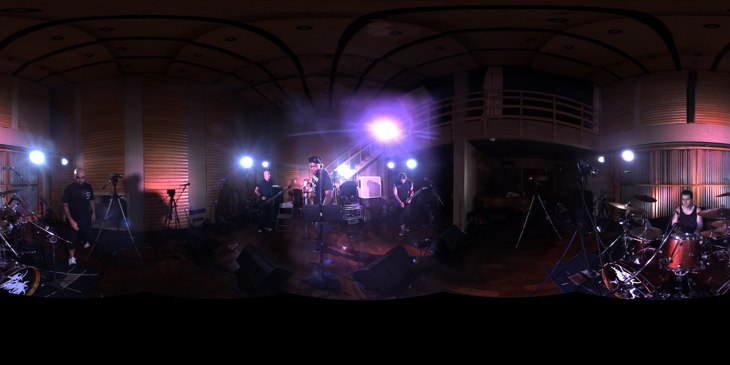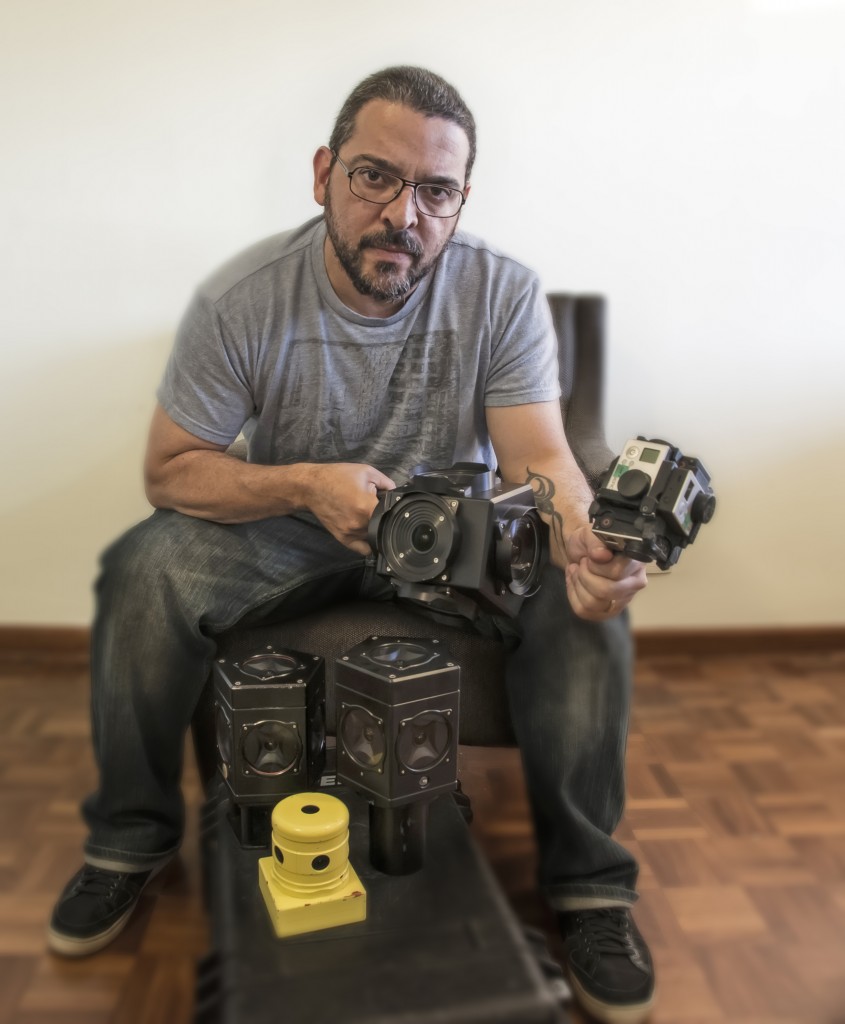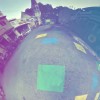“The World Isn’t Flat, It’s Panoramic”
The 2014 FIFA World Cup in Brazil Offers a New Proving Ground for 360 Degree Vision
One of the most popular international events of any year, the 2014 FIFA World Cup began on June 12. A billion people watched the World Cup’s opening match, with half a million soccer fans expected to arrive in Brazil to see the games for themselves. Host nation Brazil has done an incredible amount of work to prepare. Besides planning, logistics, construction, and personnel, they have actively promoted Brazil in all her glory as a go-to destination; that last point is essential to get thousands of fans to the World Cup itself, and to use the international spotlight to build the best possible view (literally) of the country.
Update: See more of Rodrigo’s work for IBM Smarter Planet
Panoramic imaging has been a key part of the equation. What better way to show the world how great the experience will be than to put each and every viewer right in the middle of it? While Google has taken panoramic still images of each stadium, allowing a player’s-eye view of the pitches, another project has taken it the next level, offering panoramic video introductions to Brazil’s twelve host cities. It’s called the Brasil 360° Experience.

To create the videos, Brazilian-based Rodrigo Cerqueira and his team had to travel far, visiting 27 cities and travelling more than 57,000 kilometers to collect more than 30 hours of footage. And it was well worth it. PanoGrama’s founder, Cerqueira, is excited about the response to these 360 degree videos. “In our statistics, people see each video more than two-and-a-half times each. Even for one of our five minute videos—people really want to see everything!”
“Right. So How Do You Do That?”
While everyone has seen panoramic photography and 360 degree views, there is an inconvenient fact behind them: there is no such thing as a panoramic camera.
Today, the only 360 degree image is achieved by stitching multiple images together from several cameras. For many, that means jury-rigging six cameras together and then combining the resulting footage into a single image. Not ideal.

Photo by Panograma
http://www.biennialfoundation.org/biennials/sao-paolo-biennialv/
First, physical stabilization for the multi-camera rig is essentially impossible. Second, electronic image stabilization often starts to fail as each camera independently tries to compensate for motion on slightly different axes.
Third is the issue of the camera’s original intended purpose and resulting performance profile. A perfect example is the GoPro, which has grown rapidly in popularity and is often used in experimental imaging projects, particularly panoramic imaging. “When you put a few of them together, you realize it’s not the right camera for this type of shot,” says Cerqueira, “Otherwise, all the cinema directors would use it.” Joe Cicio agrees.
The field of view is crucial. “It’s designed as a POV camera,” explains Cerqueira, “It’s great for that purpose, and It’s great for sports and action, but it gave us a tonne of headaches.”
Machine Vision: The Logical Conclusion for Control, Performance, and Something New
When you start talking about control, you start talking about machine vision. While a few machine-vision-grade projects have been attempted with the GoPro, they tend to support Cerqueira’s assessment. One University of New Hampshire project that used it for micro-bathymetry (3D topography from stereoscopic images down to 1cm) dedicated a whole paragraph of its research paper to its limitations: “The Go-Pro underwater camera stereo system is not found to be ideal,” it began, criticizing the camera’s resolution, sub-pixel algorithm, and low-light performance. Another photographer tested ten different POV cameras by strapping them all to his skydiving helmet to compare them.

Photo by Panograma
http://sepultura.com.br/en/
Other cameras are trying to make it easier. All of them stick with the idea that multiple lenses is the only way to do it. “I did research, and we have twenty companies that are promising panoramic video cameras, comments Cerqueira, “but they all think in an old-fashioned way—putting as many cameras as possible together to make a panoramic camera. If you imagine the world, it’s not flat. It’s panoramic. But they stick with that idea, and you are taking flat surfaces of a round world.”
The Ricoh Theta is clearly a step in this direction, with two lenses to cover the full 360 degrees. It’s clear that innovators like Cerqueira will only be satisfied when it’s down to just one.
The Path to PanoGrama
Today Cerqueira is shaping the future of panoramic imaging. As we’ve seen from the team at Replay and Greg Raciti’s team behind the Rubik’s cube solving robot, it requires multi-disciplinary interests and knowledge to do something new in machine vision. In Cerqueira’s case, it takes a panoramic career camera to take in all that he’s done. “As a teenager I was into photography, and I’ve been working with computers since I was thirteen. But in university, I decided to study physics.”

From there, he jumped into the dot com boom of the late nineties, going from running a coffee shop, to the tenth largest ISP in Brazil, to consulting on eBusiness for IBM. From there he went to work for a digital advertising agency, and which led him to designing and building out McEntrega, a digital ordering and delivery system for McDonald’s that still operates in 30 countries.
In 2010, he saw that Google was starting to map Brazil, and this set him on his new trajectory. Acquiring the equipment and know-how, he has moved from a series of partnerships and projects that have both expanded and refined his vision of what panoramic video should be. His work continues to generate opportunities with clients around the world.
A New Vision and a Completely Immersive Experience
Cerqueira is excited about the visual applications of panoramic imaging and how it can be applied to all sorts of different applications, from documentary footage, to wildlife, sports, and more.
“Think about a planetarium experience,” says Cerquiera, “It makes so much more sense, and is so much more impressive, when it’s all around you. There’s a lot of room for DOPs and artists to tell stories in another way. Imagine a dance performance based on the idea that you are in the middle of it. Or music videos that have things happening in every direction. We aren’t limited by our imagination, but the technology.”
The possibilities go even deeper when virtual reality headsets are taken into account. Cerqueira tried out one of the Oculus Rift headsets, and was impressed:
“When you try this, you’ve never experienced something like this in your life. You lose a sense of your body, and you are completely immersed. All your bodily senses tell you that you are there. It’s so powerful. You are transported into this world. People really believe it. Now they need content. That’s why we are so excited about it.”



 Panoramic Peek: Brazil Belongs to a Smarter Planet
Panoramic Peek: Brazil Belongs to a Smarter Planet  No Excuse Cinematography with Joe Cicio
No Excuse Cinematography with Joe Cicio 